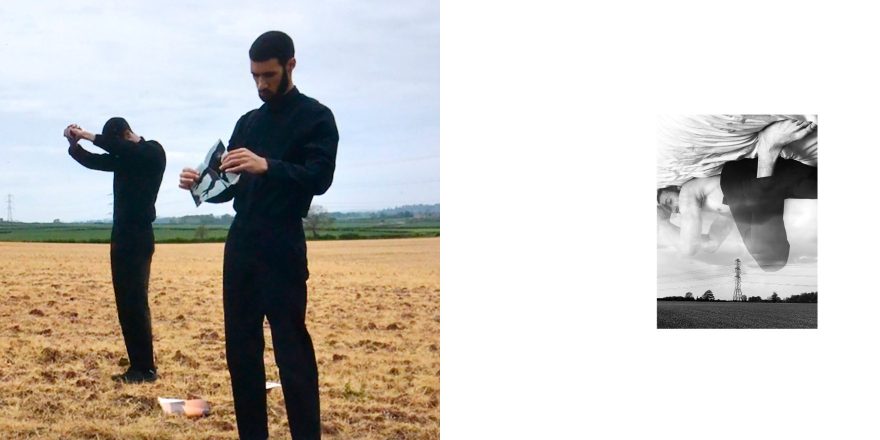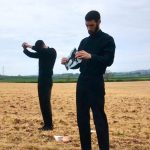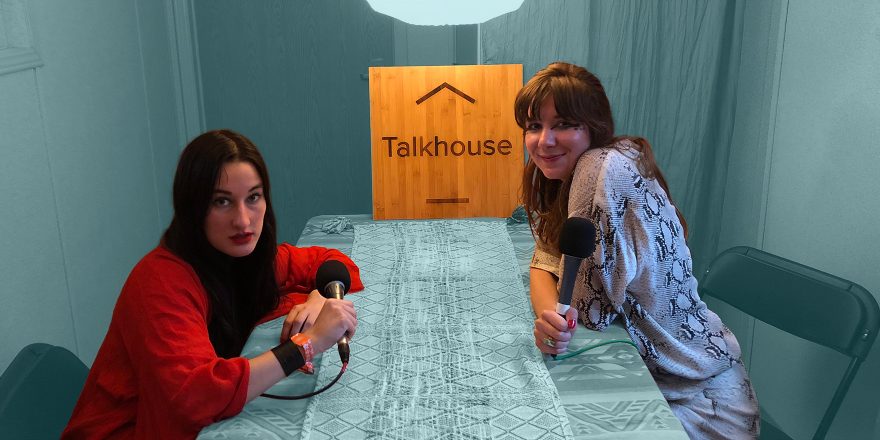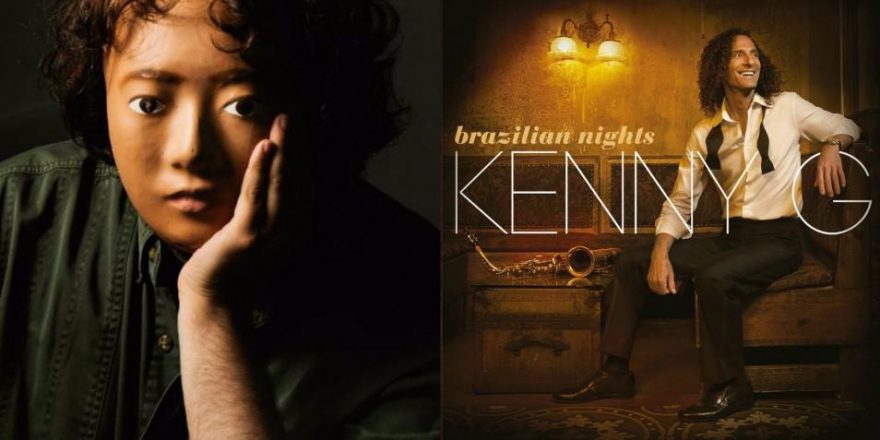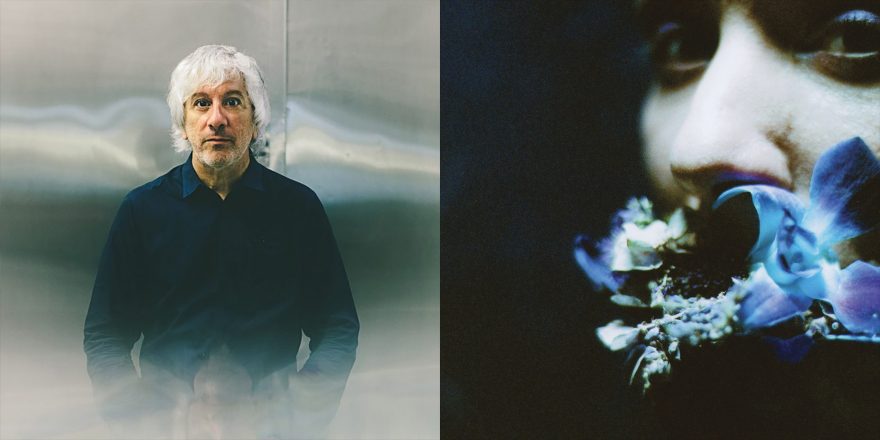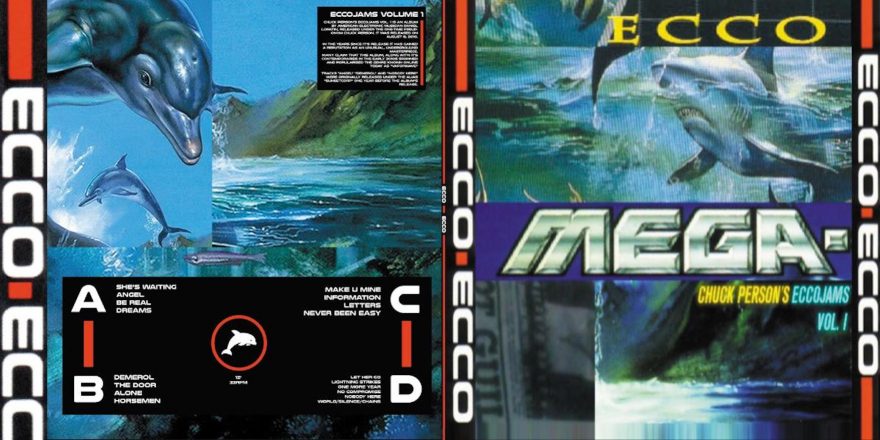With every project I want to test myself, so with this ethos, I expand the landscape of sound I have created over the years. On A Call To Arms, I have furthered my musical direction in terms of collaboration in order to bring new layers of sonics, dynamics, energies, and ideas.
The overall sound was built on a term I constructed — “day-dream society” — which is a play on sleep walking, and particular areas of mass conventional movement. I know my work fuels escapism but I’m conscious that we should at times also revel in our own thoughts whilst also actually acknowledging our surroundings, so both these things are intertwining in the translation.
“By Design”
The first thing we should talk about is the space of silence. That happened whilst I was going up to the Mute studio and traveling on the tube a lot. I used to always put headphones on and listen to music on journeys and then I stopped doing it for a while. I wanted to be really aware of my surroundings. I was listening to music and in between tracks, that bit of silence, I just thought about it. Music is this form of escapism wherever you are. That silence instantly throws you back into your own thoughts and puts you back into the real world. So I wanted to play on that: Taking people out and bringing them back in by creating two focuses in one moment.
Ben Romans Hopcraft is on the track. I’ve known him since I was about five years old. He’s one of a twin. His twin is the artist Wu-lu, who is also on the album. Our mums are best friends and we all found ourselves in music. Ben was the lead singer of Childhood. He sings on the track and he also plays clarinet, which is something we both did when we were at primary school together.
With this album, it was very much dipping into my musical past as well as doing something new. Singing is almost that journey of dipping into my past. I got into music through song. Even back in the day going around to Ben and Wu-lu’s and singing R&B songs with them. Where I could, I wanted to bring those people onto the record with me. With this being my third album, I wanted to present a life experience. I wanted to delve a bit deeper and pull from more of what I’ve been through.
The lyric “free my fallen child” in the chorus is the first line I started singing again. Where I live, I overlook a playground. I was looking out the window and there were kids running around. It made me think about how unafraid of things we were as kids. As I’ve gotten older, I’ve gotten more afraid of things. It’s like trying to get that inner child in terms of bravery. In the first verse, I talk about protection and it’s like, “I need to be brave, I don’t always need to be protected.”
“Form”
In terms of collaborators, we’ve got Wu-lu who plays guitar. I got him to riff on some improvised guitar and noise which I sampled and structured. Then we’ve got Lisa E. Harris. I kind of just stumbled across her. I was looking at opera singers. It was important to me as someone of duel heritage that a range of races were presented in terms of collaborators. For me it was quite rare to find a Black Opera Singer, but not only does she sing she performs with a theremin and she’s well-versed in many different creative outputs all of this resonated with me.
“Form” was something where I created this harsh, almost marching, beat. It’s kind of about that journey of finding yourself and taking form. That’s one part of that story and the other part is what I call a “day-dream society” where it’s all doing and not thinking. It plays into routine and how routine is good but also dangerous.
“Allowed To Dream”
The collaborator on “Allowed To Dream” is KK Null who is a Japanese noise artist. I went to see a performance in 2017 where he was playing. I was just blown away. It was so intense. He has this voice box machine and I didn’t understand anything but it was brilliant. So I quickly said hello at the end of the show and that was that. I’ve always been interested in different sonics and I wanted to work with a noise artist. Luckily, a friend of mine in Japan knew him and put us in contact.
Again, the sound of the track is playing into that kind of dreaminess and taking you almost through a nightmare and then waking you up at the end with a bell. It’s a reset. I wanted to lull you into a false sense of security leading into this track.
“Nearly God”
With this track, obviously there’s the religious connotations. I am not religious myself, in terms of I don’t practice or go to church, but my Granny was Catholic. So I’ve always been around religion in that way, and I was extremely close with her and my interest in symbolism was part of that connection.
The rhythms play into that system of rules as I create the repetition, paired with the sounds of the church bells that are from the village where my Granny lived and where I used to live in my mid to late teens. It then expands into ambience and drone which for me is the prayer section a peaceful concentration.
“A Born New”
All the samples are my voice in this track. I wanted to make myself into my own choir. I feel like on all my albums I kind of evolve. “A Born New” is a play on that. What I do is not completely new, but it is to some people. I use that title in terms of “expect more.”
At the end you’ve got the lyrics “forgive them, for they don’t know their favors.” That’s playing into when people try to do things for you but they don’t know if you want it or if it actually helps you. A favor isn’t always a favor. “I stand here in pastures” is about awareness, going on walks I’ve really tried to be aware of my surroundings, for example a walk around London I will look at buildings and the size of windows and think how that has effected society.
Obviously I play with religious content and words. For me, when I look at religion, I’m just fascinated by the power of it and what it creates.
“The Fold”
We’ve got Haley Fohr from Circuit Des Yeux and we’ve also got Matthew Borne who plays piano. The piano is an interpretation of something I had already written and I spent some time developing it with Matthew. With Haley, I already knew what kind of tone of voice I wanted. So I was just on the internet listening to singers and trying to find that tone. With her, it’s exactly what I wanted. Also, I knew lyrically, she would match where I am.
It’s all about protection. With the “birdcage,” where I live has a roof terrace which is scaffolded all around. I was sitting there and I thought about how I was so high up and there’s this scaffolding. I just thought of a birdcage. So I played off that. When a bird’s in a cage, you admire it, but at the same time, it’s a protection for both the bird and you.
“Lie Digging”
There’s a little bit of Morgan Simpson from Black Midi on this track. I was on a plane and I ended up sitting next to an A&R of Sony or something. I was speaking to him and asked, “Who are the hot new bands?” And he mentioned Black Midi, so I checked them out. I went to one of their shows. The band’s amazing, and his drumming skills really stood out. I turned out that he actually drummed for Wu-lu’s band in the beginning. So we had a mutual friend. We did a session and I used part of that.
I’m constantly exploring genre gaining a traditional understand and then destructing that.
This jazz horn from a world of improvisation combined with the rhythm thats hones in on ruling, routine, focus, and an everlasting situation.
“Winter Sun”
We have Ben Vince who plays sax. Again, someone I’ve known for a while, but just known as someone who is into music. I didn’t really know he made music until he sent me his record, Monuments. He sent me that on Facebook one day and I was like, “Whoa. This is amazing.” He’s from Nottingham as well, which plays back into the part of my life that I spent there.
“Winter Sun” is a conversational piece with myself. With the lyric, “leave me talking to myself” — that’s what I’m doing throughout the whole song. The “pigeon angel” reference is about being back at my Granny’s. For some reason, the noise of this pigeon is what I remember and it was really calming for me. I found my Granny’s place really calming. Wherever I move now, if I hear that sound, I just think of her. It’s the sound of, Oh, it’s going to be OK.
I’ve been to way too many funerals over the last few years.
“Cast”
A dainty piano piece. A focused repetition, with hidden small details that help carry things along. It’s that little bit of change that you might not even notice, but it’s there and it’s what keeps you listening. I’ve become fascinated with that. In my last album, I went quite fluid and I was showing a lot of different approaches. I took tracks very different ways. I almost created a whole story within a track. With this album, it was more about creating a story within an album.
“Cast,” for me, is the waves coming in and out. That’s what I pictured as I made it.
A Call To Arms is out now via Mute.
(Photo Credit: left, Peter De Potter)



